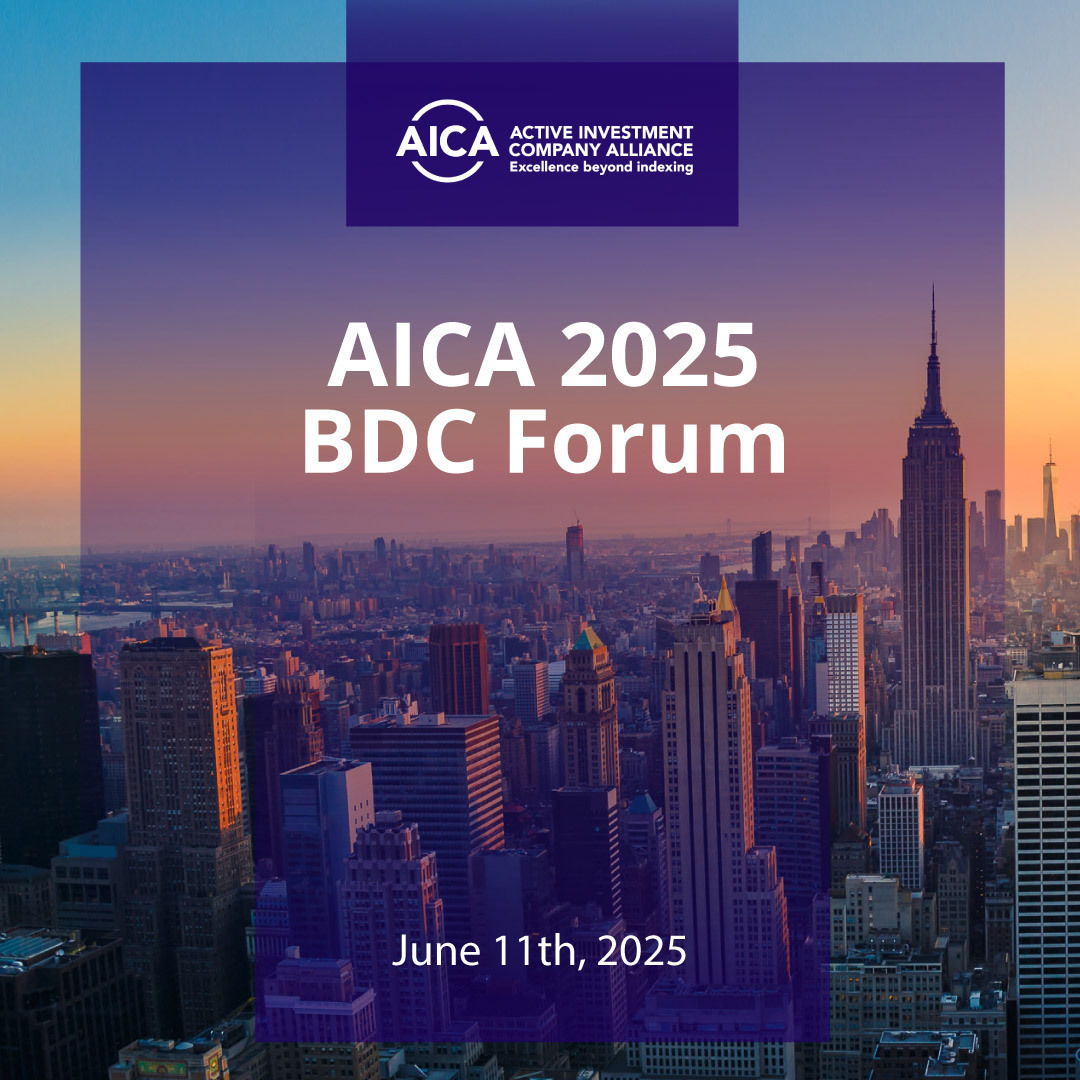AICA Panel: CEF Structure, Discounts Offer Investors Enhanced Yield
With closed-end funds (CEF) currently trading at a discount to NAV, a panel of leading asset managers at AICA’s 2023 Fall Roundtable said the closed-end nature of income-oriented CEFs offers investors enhanced yield and income generation due to those discounts. CEF investment strategies focused on value-oriented companies and private infrastructure could serve investors well, experts from Thornburg Investment Management, abrdn, and Brookfield said at the November 15, 2023, event in New York City.
The panel discussion, Equity Income Exposure for Dividend Confidence, also highlighted dynamic fund allocation as another strategy asset managers have used to generate yield from income-oriented CEFs.
Value-Oriented Investing
Dan Silver, panel moderator and Portfolio Manager at Closed-End Fund Advisors, set the tone for the discussion by noting that income-oriented CEFs can be “total return vehicles” even when they are trading a substantial discount.
Adam Sparkman, a Client Portfolio Manager at Thornburg Investment Management, said a “normalized cost of capital” in play since early 2022 has favored higher growth, longer duration companies, and “pushed investors out further on the risk curve looking for total return.”
“I think that we’re getting a structural shift, or we think that we’re going to see a structural shift in the market that should favor income and more value-oriented companies over these high-duration growth companies that weren’t necessarily making any money today,” he added.
Thornburg launched its first closed-end fund, the Thornburg Income Builder Opportunities Trust, in 2021 — a listed CEF with the Nasdaq ticker symbol TBLD.
In response to discounts, Josh Duitz, Deputy Head of Global Equities and Head of Infrastructure at abrdn said the CEF discount “just enhances the total return that you can earn from investing in income funds.” Now is “a unique time to invest in companies that actually pay dividends,” he added, noting that globally dividends have grown about 8.4% over the last 20 years on top of more recent nominal U.S. GDP growth.
“We’re always looking to find companies that have the ability to grow their earnings and dividends long term, [which] enhances a total return and allows … that large discount to hopefully narrow,” he said.
Infrastructure Investing
Among the funds that Duitz and his team manage is the abrdn Global Infrastructure Income Fund, a listed CEF with the NYSE ticker symbol ASGI.
Duitz highlighted the worldwide shift away from fossil fuels, stating that investments in the energy transition hold the potential to yield “an impressive dividend and predictable cash flows” in the future. He pointed out that a record $385 billion was spent on clean energy last year. Furthermore, Duitz mentioned that, in order to attain net-zero emissions by 2050, global expenditure on energy transition is projected to be between $100 and $300 trillion.
Dynamic Fund Allocation
A panelist with Brookfield said another beneficial strategy in the current environment has been to dynamically allocate between fixed-income and equity, when appropriate, to maximize total return.
Speaking of the Brookfield Real Asset Income Fund, a diversified, closed-end management investment company with the NYSE ticker symbol RA, Chris Janus, a Director and Portfolio Manager at Brookfield, noted the fund’s equity allocation is close to zero today to maximize yields currently flowing from the fund’s focus on high-yield bonds and other forms of credit.
“In this exact environment, you get paid so much more in credit,” he said. “So, that’s how we’re currently positioned, but we’re excited to swing some of that capital back into equities when we see the time is more appropriate.”
To hear more valuable insights from this panel, register to access a replay and review the full agenda of AICA’s 2023 Fall Roundtable.


